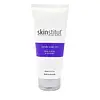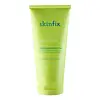What's inside
What's inside
 Key Ingredients
Key Ingredients

 Benefits
Benefits

 Concerns
Concerns

 Ingredients Side-by-side
Ingredients Side-by-side

Water
Skin ConditioningGlycolic Acid
BufferingSilica
AbrasiveAmmonium Lauryl Sulfate
CleansingSodium Hydroxide
BufferingHydrogenated Jojoba Oil
AbrasiveCaprylic/Capric Triglyceride
MaskingParaffin
PerfumingMagnesium Aluminum Silicate
AbsorbentGlyceryl Stearate
EmollientPanthenol
Skin ConditioningCetyl Alcohol
EmollientPEG-100 Stearate
Stearyl Alcohol
EmollientXanthan Gum
EmulsifyingMelaleuca Alternifolia Leaf Oil
AntioxidantSodium Hydroxymethylglycinate
PreservativeDisodium EDTA
Water, Glycolic Acid, Silica, Ammonium Lauryl Sulfate, Sodium Hydroxide, Hydrogenated Jojoba Oil, Caprylic/Capric Triglyceride, Paraffin, Magnesium Aluminum Silicate, Glyceryl Stearate, Panthenol, Cetyl Alcohol, PEG-100 Stearate, Stearyl Alcohol, Xanthan Gum, Melaleuca Alternifolia Leaf Oil, Sodium Hydroxymethylglycinate, Disodium EDTA
Water
Skin ConditioningHydrogenated Castor Oil
EmollientGlycerin
HumectantVitis Vinifera Seed Oil
EmollientCocos Nucifera Oil
MaskingCaprylic/Capric Triglyceride
MaskingGlycolic Acid
BufferingLactic Acid
BufferingCetearyl Alcohol
EmollientStearyl Alcohol
EmollientSodium Hydroxide
BufferingPropanediol
SolventCetearyl Glucoside
EmulsifyingBetaine
HumectantOryza Sativa Bran Extract
Skin ConditioningPanthenol
Skin ConditioningChlorphenesin
AntimicrobialHelianthus Annuus Extract
EmollientBisabolol
MaskingSimmondsia Chinensis Seed Oil
EmollientPrunus Amygdalus Dulcis Oil
Skin ConditioningBambusa Arundinacea Stem Extract
Skin ConditioningLactobacillus/Punica Granatum Fruit Ferment Extract
Skin ConditioningLactobacillus/Pumpkin Fruit Ferment Filtrate
Skin ConditioningAloe Barbadensis Leaf Juice
Skin ConditioningAllantoin
Skin ConditioningTocopherol
AntioxidantRosmarinus Officinalis Leaf Extract
AntimicrobialVaccinium Myrtillus Fruit Extract
Skin ConditioningSalix Nigra Bark Extract
Skin ProtectingGlucose
HumectantSaccharum Officinarum Extract
MoisturisingCitrus Aurantium Dulcis Fruit Extract
MaskingCitrus Limon Fruit Extract
MaskingLeuconostoc/Radish Root Ferment Filtrate
AntimicrobialMicrocitrus Australasica Fruit Extract
Acer Saccharum Extract
Skin ConditioningXanthan Gum
EmulsifyingCaprylyl Glycol
EmollientTrisodium Ethylenediamine Disuccinate
Potassium Sorbate
PreservativeCitric Acid
BufferingPhenoxyethanol
PreservativeWater, Hydrogenated Castor Oil, Glycerin, Vitis Vinifera Seed Oil, Cocos Nucifera Oil, Caprylic/Capric Triglyceride, Glycolic Acid, Lactic Acid, Cetearyl Alcohol, Stearyl Alcohol, Sodium Hydroxide, Propanediol, Cetearyl Glucoside, Betaine, Oryza Sativa Bran Extract, Panthenol, Chlorphenesin, Helianthus Annuus Extract, Bisabolol, Simmondsia Chinensis Seed Oil, Prunus Amygdalus Dulcis Oil, Bambusa Arundinacea Stem Extract, Lactobacillus/Punica Granatum Fruit Ferment Extract, Lactobacillus/Pumpkin Fruit Ferment Filtrate, Aloe Barbadensis Leaf Juice, Allantoin, Tocopherol, Rosmarinus Officinalis Leaf Extract, Vaccinium Myrtillus Fruit Extract, Salix Nigra Bark Extract, Glucose, Saccharum Officinarum Extract, Citrus Aurantium Dulcis Fruit Extract, Citrus Limon Fruit Extract, Leuconostoc/Radish Root Ferment Filtrate, Microcitrus Australasica Fruit Extract, Acer Saccharum Extract, Xanthan Gum, Caprylyl Glycol, Trisodium Ethylenediamine Disuccinate, Potassium Sorbate, Citric Acid, Phenoxyethanol
Ingredients Explained
These ingredients are found in both products.
Ingredients higher up in an ingredient list are typically present in a larger amount.
This ingredient is an emollient, solvent, and texture enhancer. It is considered a skin-softener by helping the skin prevent moisture loss.
It helps thicken a product's formula and makes it easier to spread by dissolving clumping compounds.
Caprylic Triglyceride is made by combining glycerin with coconut oil, forming a clear liquid.
While there is an assumption Caprylic Triglyceride can clog pores due to it being derived from coconut oil, there is no research supporting this.
Learn more about Caprylic/Capric TriglycerideGlycolic Acid is arguably the most famous alpha hydroxy acid (AHA) with tons of research backing its benefits.
It is found naturally in sugar cane but the form used in skincare is usually synthetic for purity and stability.
Glycolic acid removes the top layer of dead skin cells to allow newer and fresher ones to emerge.
AHAs work by breaking down the structural “glue” that holds old skin cells in place. When that buildup is gone, your skin can renew itself more efficiently.
Research also shows glycolic acid stimulates collagen production, helping to firm and thicken the skin over time. This is one of its biggest advantages over other AHAs.
Overall, glycolic acid helps with:
Fun fact: Glycolic acid boosts skin hydration by helping it produce molecules that increase hyaluronic acid naturally.
To work best, glycolic acid products should have a pH between 3-4 (that’s where exfoliation is most effective but still gentle on skin).
The pH and concentration of a product are key to its effectiveness:
It is normal to feel a slight stinging sensation when using glycolic acid. This usually fades as your skin adjusts.
Because glycolic acid has the smallest molecular size in the AHA family, it can penetrate deeper, which enhances its effectiveness but also makes it more likely to irritate sensitive skin.
If your skin is very sensitive or prone to rosacea, glycolic acid may be too strong; in that case, try milder options like lactic acid or a PHA instead.
Recent studies suggest glycolic acid might even help protect against UV damage. But don’t skip sunscreen! Freshly exfoliated skin is more sensitive to the sun.
Glycolic acid is a skincare superstar. It smooths, brightens, hydrates, and firms the skin. Unless you’re highly sensitive, it’s well worth adding to your routine.
Read more about some other popular AHA's here:
Learn more about Glycolic AcidPanthenol is a common ingredient that helps hydrate and soothe the skin. It is found naturally in our skin and hair.
There are two forms of panthenol: D and L.
D-panthenol is also known as dexpanthenol. Most cosmetics use dexpanthenol or a mixture of D and L-panthenol.
Panthenol is famous due to its ability to go deeper into the skin's layers. Using this ingredient has numerous pros (and no cons):
Like hyaluronic acid, panthenol is a humectant. Humectants are able to bind and hold large amounts of water to keep skin hydrated.
This ingredient works well for wound healing. It works by increasing tissue in the wound and helps close open wounds.
Once oxidized, panthenol converts to pantothenic acid. Panthothenic acid is found in all living cells.
This ingredient is also referred to as pro-vitamin B5.
Learn more about PanthenolSodium Hydroxide is also known as lye or caustic soda. It is used to adjust the pH of products; many ingredients require a specific pH to be effective.
In small amounts, sodium hydroxide is considered safe to use. However, large amounts may cause chemical burns due to its high alkaline.
Your skin has a natural pH and acid mantle. This acid mantle helps prevent harmful bacteria from breaking through. The acid mantle also helps keep your skin hydrated.
"Alkaline" refers to a high pH level. A low pH level would be considered acidic.
Learn more about Sodium HydroxideStearyl Alcohol is a type of fatty alcohol from stearic acid. It is a white, waxy compound used to emulsify ingredients.
Fatty Alcohols are most often used as an emollient or to thicken a product. Emollients help soothe and hydrate the skin by trapping moisture.
They are usually derived from natural fats and oils and therefore do not have the same drying or irritating effect as solvent alcohols. FDA allows products labeled "alcohol-free" to have fatty alcohols.
Learn more about Stearyl AlcoholWater. It's the most common cosmetic ingredient of all. You'll usually see it at the top of ingredient lists, meaning that it makes up the largest part of the product.
So why is it so popular? Water most often acts as a solvent - this means that it helps dissolve other ingredients into the formulation.
You'll also recognize water as that liquid we all need to stay alive. If you see this, drink a glass of water. Stay hydrated!
Learn more about WaterXanthan gum is used as a stabilizer and thickener within cosmetic products. It helps give products a sticky, thick feeling - preventing them from being too runny.
On the technical side of things, xanthan gum is a polysaccharide - a combination consisting of multiple sugar molecules bonded together.
Xanthan gum is a pretty common and great ingredient. It is a natural, non-toxic, non-irritating ingredient that is also commonly used in food products.
Learn more about Xanthan Gum